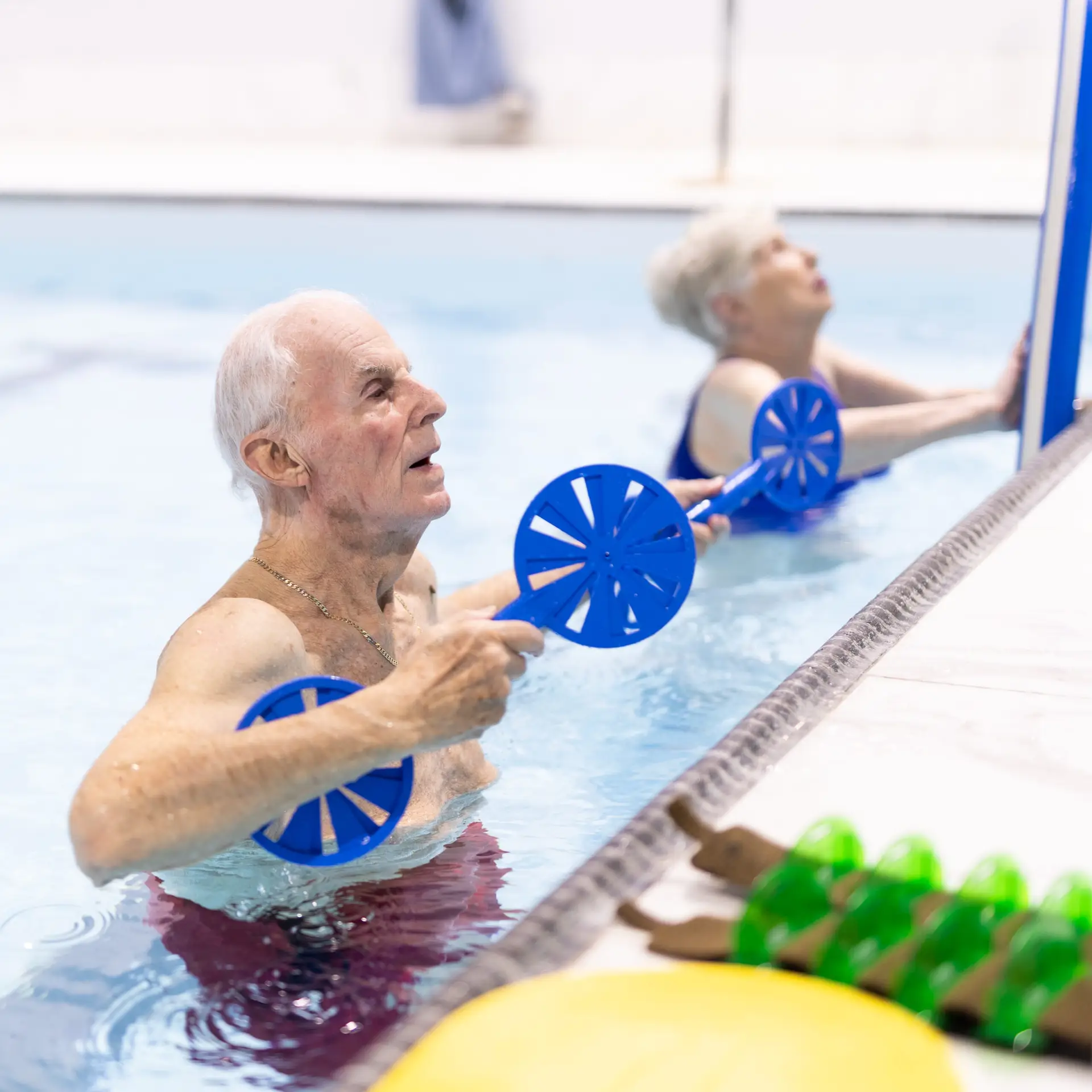contact us today!
CALL BACK
Our personalized Aqua Therapy Program is tailored to your specific injury and recovery goals. Delivered by experienced healthcare providers in a 32°C heated, saltwater pool, this therapy is accessible to everyone, including those needing a chair lift. Experience the benefits of our therapeutic pools at Vaughan locations.

Medical professionals design aqua therapy programs to promote relaxation, strength-building, and balance enhancement. Thanks to the buoyancy of water, it reduces stress on joints and muscles, making it a safer alternative to land-based therapies.
decreasing swelling of injured joints and tissues
Aqua therapy, also called hydrotherapy, is a specialized treatment conducted in water. It involves personalized programs that are carefully designed and supervised by trained medical professionals. Specifically, these programs focus on addressing specific injuries or disabilities, ensuring that every exercise is both safe and tailored to the patient’s unique needs.
Unlike aqua therapy, water exercises such as aqua aerobics are group fitness activities primarily aimed at general physical fitness. Furthermore, these exercises do not require medical supervision or expertise in rehabilitation. Additionally, they are not designed for recovery purposes and are not covered by most insurance policies.
Aqua therapy offers a safer and more effective alternative for individuals recovering from injuries. Thanks to the buoyancy of water, it significantly reduces strain on joints and muscles, thereby minimizing pain while improving strength, flexibility, and balance. Moreover, it accelerates recovery in a controlled and supportive environment, making it an ideal choice for rehabilitation.
AQUA THERAPY
Water improves range of motion and flexibility
Exercise plays a vital role in maintaining overall health, particularly for seniors. In fact, regular physical activity not only improves cognitive function but also helps prevent disease, enhances mental well-being, reduces the risk of falls, and strengthens social connections. Therefore, experts recommend that seniors aim for:
As people age, physical limitations and chronic conditions can make certain exercises unsuitable. Many land-based exercises increase pressure on joints and bones, particularly for seniors with flexibility or balance issues.
Aqua therapy provides seniors with a safer alternative to traditional exercises. Water’s buoyancy reduces strain on joints while promoting muscle strength, balance, and flexibility. As a result, it is considered one of the most effective and senior-friendly forms of physical activity.
Recovering from a motor vehicle accidents often cause injuries like whiplash, joint pain, or muscle stiffness, making recovery a challenging journey. Especially when dealing with injuries like whiplash, joint pain, or muscle stiffness. However, aqua therapy provides a gentle yet effective solution for individuals seeking rehabilitation after an accident.
Water’s buoyancy significantly reduces pressure on injured joints and muscles, allowing patients to perform exercises with minimal pain or risk. Additionally, aqua therapy helps improve flexibility, rebuild strength, and promote overall recovery in a safe and controlled environment. As a result, it’s an ideal option for individuals recovering from MVAs who want a supportive path to regaining mobility and reducing discomfort. This version improves the flow and coherence by using transitions like however, thanks to, additionally, and as a result. Let me know if you’d like further adjustments!
Hydroactive Clinic offers a more specialized form of chiropractic care. In fact, we’re a Structural Corrective Specialist clinic. Unlike regular chiropractors, our doctors are trained extensively to specialize in structural correction. If you’re experiencing chronic pain or recovering from an injury, chiropractic care may bring the relief you’re looking for. Therefore, contact Hydroactive today to schedule your consultation at our Vaughan location.
We typically offer aquatherapy sessions in groups of 1 to 8 participants. Multiple experienced providers guide and instruct patients on the pool deck, ensuring safety and maximizing the benefits of aquatic therapy.
Aquatic therapy is highly adaptable to each individual’s needs and goals. Whether addressing conditions such as arthritis, chronic pain, fibromyalgia, muscle weakness, post-surgical recovery, or neurological concerns like multiple sclerosis and stroke, all sessions are customized for optimal outcomes.
Aquatherapy care is often covered by private insurance, motor vehicle accident insurers, commercial policies, and Workers’ Compensation plans (billed under Physiotherapy or Chiropractic). Coverage varies based on your provider and policy. At HydroActive, we’re here to answer all your insurance questions and ensure you maximize your benefits.
You don’t need swimming skills to participate. Our warm, shallow pools, along with lifeguards and safety equipment, ensure a safe environment.

Patients do not need a referral to be treated by a chiropractor. However, some private insurance companies do require a doctor’s referral. We take care of all billing details, call us to find out more!
MONDAY
9:00 - 21:00
TUESDAY
Closed
WEDNESDAY
9:00 - 21:00
THURSDAY
9:00 - 12:00
FRIDAY
9:00 - 14:00
SATURDAY
Closed
SUNDAY
9:00 - 12:00
Address
Phone
Fax
© 2024 by Hydroactive Aquatherapy and Rehabilitation Inc.
Designed and Developed by
DENXA